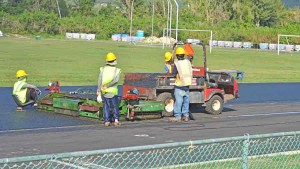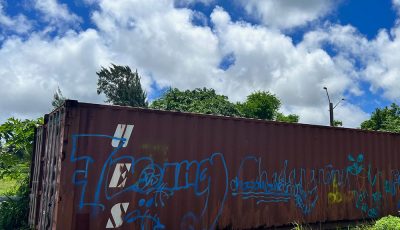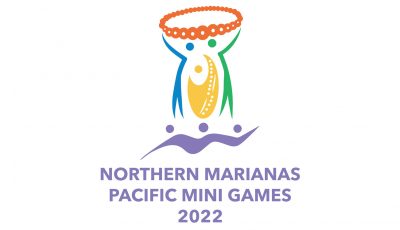Paving of Oleai track ongoing

Workers pave the Oleai Sports Complex’s track oval with black rubber granules yesterday. (Roselyn B. Monroyo)
The wet pour surface has been laid at the Oleai Sports Complex’s track oval and is expected to be completed early next week.
The wet pour surface is a blended mix of black rubber granules bound together and represents the second layer of the track oval. Contractor Tang’s Corp. and its employees have started putting the wet pour last week and have completed about 50m of the 400m track or the curb portion (both sides) of the oval at the main entrance of the facility. Yesterday, the contractor’s employees were working on the first 100m portion of the track (outer lane).
“The weather is good today and hopefully it will stay that way the rest of the week so they can work on the other side of the oval. I initially thought they were pouring more asphalt, but I was told later that these are the wet pour so they are looking good at meeting the deadline (before the month ends,” said Tony Rogolifoi, executive director of Northern Marianas Sports Association, which is in charge of the management and maintenance of the Oleai Sports Complex.
The wet pour needs curing time and should be flattened properly before the contractor proceeds with the next step—which is painting and placement of adhesive and pouring of rubber crumbs. When the final surface sets in, cleaning will be done before marking begins.
“The expert from Australia will be back later this month to ensure that proper marking is done and meets the standard of the International Association of Athletics Federations,” Rogolifoi said yesterday in an interview with Saipan Tribune.
The track has to regain the Level II certification from IAAF to be able to host regional tournaments, such as the Oceania Area Championships, Micronesian Athletics Championships, and the track and field competition in the Pacific Games.
“We’re almost there so we’re asking the public to have more patience as we work on having the track back,” Rogolifoi added.
It took more than three years before the track, which was built in the early 2000s, underwent resurfacing work. The project costs nearly a million ($990,000) with majority of the funds coming from the U.S. Department of Housing and Urban Development through NMHC’s Community Development Block Grant, while MVA has shelled out $250,000 as part of the its sports tourism program.



























